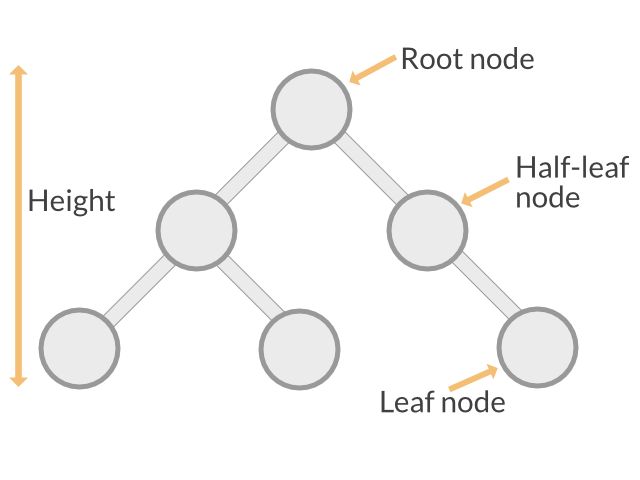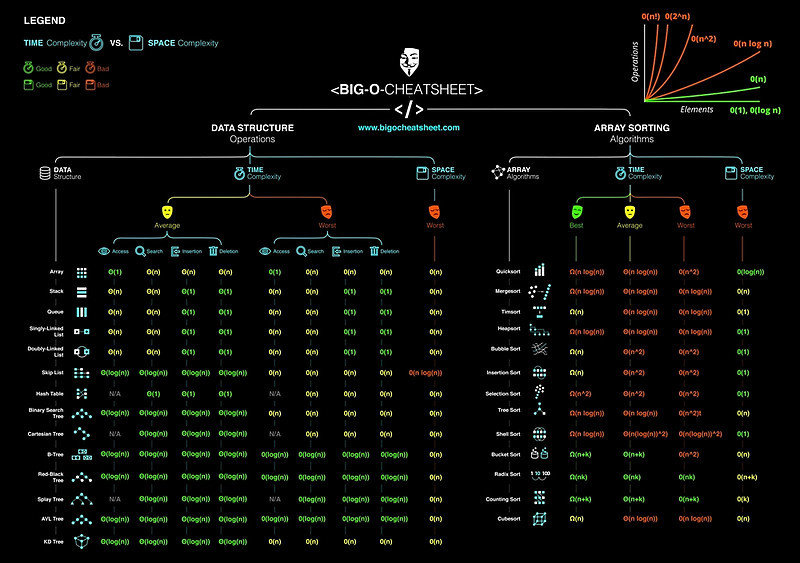Hi, I'm Eli 👋

@elibelly

Software Engineer at Twitter
(she/her)
Get your Computer Science degree
in 10 minutes*
@elibelly
*Here are some CS concepts that you might want to know exist or maybe clarify
@elibelly
What is computer science?
@elibelly
The study of problem solving
Looking at a problem and working out a way a computer might be able to help you solve it.
@elibelly
- The scientific and practical approach to computation and its applications.
- The systematic study of the feasibility, structure, expression, and mechanization of the methodical procedures (or algorithms) that underlie the acquisition, representation, processing, storage, communication of, and access to information.
More formally...
@elibelly
we want to, like, get information or do stuff to it soo how do we science that and then make computers do all the work real fast
Which basically means...
@elibelly
Algorithms
@elibelly
What is an algorithm ?
An unambiguous set of steps to complete a task or computation
It is very much like a recipe for a computer
@elibelly
Algorithm: Find the max
Problem: Given a list of positive numbers, we need to return the largest number on the list.
Input: A list, "L", of positive numbers. This list must contain at least one number.
Output: A number, "n", which will be the largest number of the list.
- Set "max" to 0.
- For each number x in the list L, compare it to max. If x is larger, set max to x.
- "max" is now set to the largest number in the list.
@elibelly
Algorithms & Computer Science
- Does an algorithm actually exist to do a thing?
- Are we totally sure that the algorithm works for all possible inputs?
- How long does the algorithm take to run?
- How much memory space does it require?
- Once we know it’s possible to solve a problem with an algorithm, is the algorithm the best possible one. Can the problem be solved more quickly?
Answering some Qs
@elibelly
Time Complexity
The amount of time an algorithm takes to run in relation to the number of inputs
@elibelly
Big O Notation
A mathematical notation that describes a measure of the execution of a function as the inputs approach infinity
O( ? )
Example: O( 1 ) , O( n ), O( log n ) where n represents the number of inputs
@elibelly
Let's say you want to watch a TV series...
| Download | Order Online | |
|---|---|---|
@elibelly
Let's say you want to watch a box set....
| Download | Order Online | |
|---|---|---|
| 10 episodes | 10 hours | 16 hours |
@elibelly
Let's say you want to watch a box set....
| Download | Order Online | |
|---|---|---|
| 10 episodes | 10 hours | 16 hours |
| 50 episodes | 50 hours | 16 hours |
@elibelly
Let's say you want to watch a box set....
| Download | Order Online | |
|---|---|---|
| 10 episodes | 10 hours | 16 hours |
| 50 episodes | 50 hours | 16 hours |
| n episodes | n hours | 16 hours |
| Time complexity | O( n ) | O( 1 ) |
Conclusion: Ordering Online is a more scalable algorithm!
@elibelly
What is the time complexity of searching for a maximum number in an array?
[ 34, 7, 0, 4, 12, 11, 104, 3, 19 ]
O(n)
@elibelly
Data Structures
A data structure is a particular way of organizing data in a computer so that it can be used efficiently
- Array*
- Linked List
- Stack*
- Queue*
- Tree*
- Heap
- Graph*
- Hash Map
@elibelly
Stack
Queue


pop()
push(book)
enqueue(person) //add
dequeue()
//remove
👀peek()
🤔isEmpty()
👀peek()
🤔isEmpty()
LIFO
Last In, First Out ordering
FIFO
First In, First Out ordering
@elibelly
Trees
Graphs


Node-based data structures. A tree is a type of graph.
@elibelly
Analyzing Time Complexity of Algorithmic Operations on Data Structures
(adding it all together)
@elibelly
Doing things to information
- Search
- Sort
- Insert
- Find
- Delete
@elibelly
Algorithm: Find the max
Problem: Given a list of positive numbers, we need to return the largest number on the list.
Input: A list, "L", of positive numbers. This list must contain at least one number.
Output: A number, "n", which will be the largest number of the list.
- Set "max" to 0.
- For each number x in the list L, compare it to max. If x is larger, set max to x.
- "max" is now set to the largest number in the list.
@elibelly
Unsorted Array
Binary Search Tree
[ 3, 5, 20, 11, 8 ]
[ 8, 3, 11, 5, 20 ]
3
20
11
8
5
Time Complexity O(n)
Time Complexity O(log n)
Sorted Array
Unbalanced Tree
[ 20, 11, 8, 5, 3 ]
Time Complexity O(1)
20
11
8
5
Time Complexity O(n)
@elibelly

Other Topics in Computer Science
-
Programming Language Theory
-
Artificial Intelligence
-
Databases
-
Networking
-
Graphics
-
Cybersecurity
-
Human-Computer Interaction
-
Operating Systems
-
Compiler Theory
-
Distributed Systems
-
Boolean Logic
-
Number Theory
-
Game Theory
-
Bioinformatics
-
Big Data
@elibelly
👋
THANKS!
@elibelly